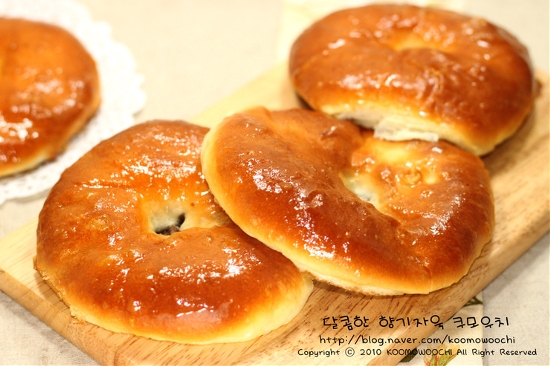
Full of red bean paste. Sweet red bean bread
Taking advantage of being home-made, the filling is full of walnuts. If you've tried it, you'll be amazed. I think it weighs more than twice as much as regular bakery red bean bread. Since it's so heavy, people around me keep saying red bean bread. I didn't disappoint that expectation. I made it by pressing the red bean paste with my heel.
4 serving
Within 90 minutes

쿠모우치
- Ingredients
-
-
Strong flour200g
-
Soft flour50g
-
Salt4g
-
East8g
-
Sugar35g
-
egg1ea
-
powdered milk8g
-
Milk70g
-
Water30g
-
Butter38g
-
red bean paste585g
-
Walnutsuitably
-
- Cooking Steps
-
STEP 1/10Measure flour, sugar, yeast, and salt out of touch. When you're done measuring, use a spatula to mix well.
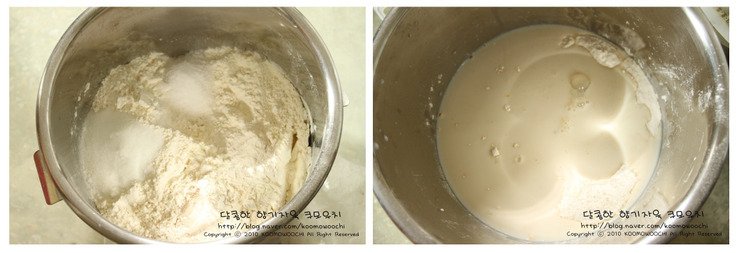 STEP 2/10Add all liquid ingredients except butter and knead. When the dough is lumped together and gluten is slightly formed, add butter and knead again. Knead enough to hold gluten.
STEP 2/10Add all liquid ingredients except butter and knead. When the dough is lumped together and gluten is slightly formed, add butter and knead again. Knead enough to hold gluten.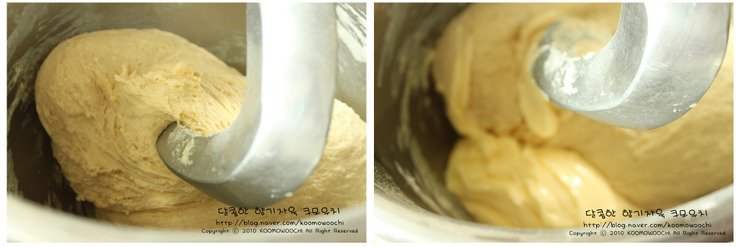 STEP 3/10When the dough is finished, apply the first fermentation for 40 to 40 minutes until the volume is 2 to 2.5 times greater.
STEP 3/10When the dough is finished, apply the first fermentation for 40 to 40 minutes until the volume is 2 to 2.5 times greater.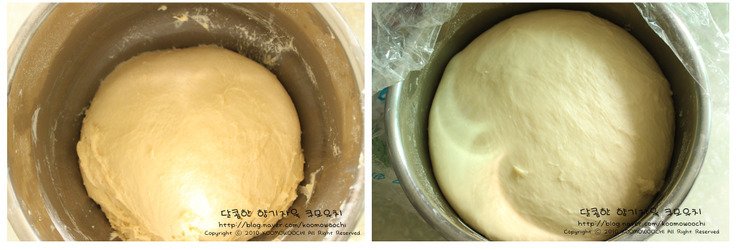 STEP 4/10After the first fermentation, divide the dough by 56g and give it 10 minutes of bench time (=intermediate fermentation).
STEP 4/10After the first fermentation, divide the dough by 56g and give it 10 minutes of bench time (=intermediate fermentation). STEP 5/10Place red bean paste on top of the dough after bench time. And walnuts, please. If you roll the dough with a rolling pin (=like dumpling skin) and wrap it with sediment, the bread is thin on the top and the bread is thick on the bottom.
STEP 5/10Place red bean paste on top of the dough after bench time. And walnuts, please. If you roll the dough with a rolling pin (=like dumpling skin) and wrap it with sediment, the bread is thin on the top and the bread is thick on the bottom. STEP 6/10I added 56g of dough and 62 to 65g of sediment I think you need to put this much in to eat it. If you don't like the sediment, reduce the amount by half or a third. Using Hera, roll the dough and press the sediment.
STEP 6/10I added 56g of dough and 62 to 65g of sediment I think you need to put this much in to eat it. If you don't like the sediment, reduce the amount by half or a third. Using Hera, roll the dough and press the sediment.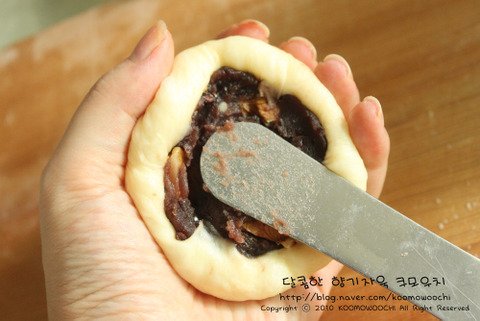 STEP 7/10If you put all the sediment, finish the bottom well. If you do this part roughly, it becomes bread that's spitting out red beans.
STEP 7/10If you put all the sediment, finish the bottom well. If you do this part roughly, it becomes bread that's spitting out red beans.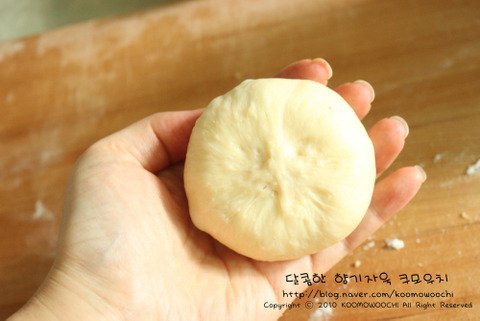 STEP 8/10Place well-rounded dough in a pan at appropriate intervals, pan and press flat.
STEP 8/10Place well-rounded dough in a pan at appropriate intervals, pan and press flat. STEP 9/10Coat the egg with flour and make holes in the red bean bread. You can make it with just one egg even if you don't have a red bean bread molding tree, so please use an egg.
STEP 9/10Coat the egg with flour and make holes in the red bean bread. You can make it with just one egg even if you don't have a red bean bread molding tree, so please use an egg.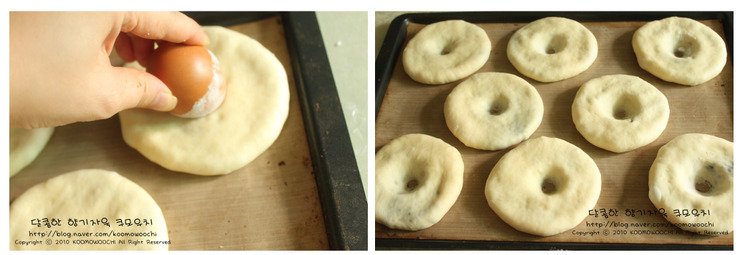 STEP 10/10Please do the second fermentation for about 50 minutes. It's swollen, right? Bake at 180 degrees for 18 minutes until golden brown, and it's done.
STEP 10/10Please do the second fermentation for about 50 minutes. It's swollen, right? Bake at 180 degrees for 18 minutes until golden brown, and it's done.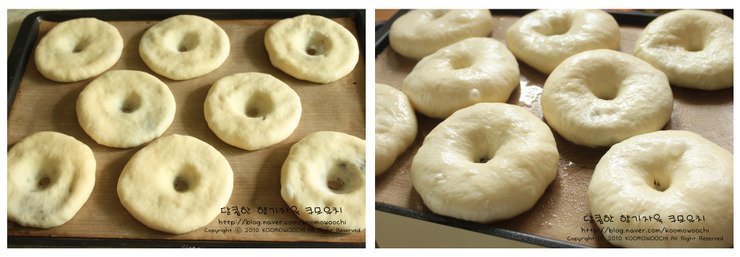
- Cooking review
-
4.80score
-

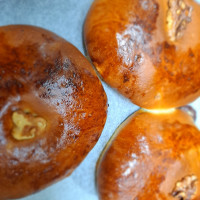 746*****scoreYou made it well and ate it2021-05-04 09:49
746*****scoreYou made it well and ate it2021-05-04 09:49 -
 726*****scoreI didn't put walnuts but red bean paste. It was too sweet even though I added a little bit of measurement.2020-03-25 05:04
726*****scoreI didn't put walnuts but red bean paste. It was too sweet even though I added a little bit of measurement.2020-03-25 05:04 -

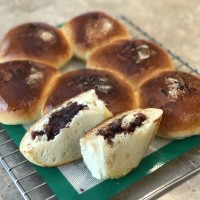 292*****scoreIt came out delicious. It should have been panned wider, but it tasted good!2017-08-27 10:11
292*****scoreIt came out delicious. It should have been panned wider, but it tasted good!2017-08-27 10:11 -
 802*****scoreIt was fun to make and it was so delicious! Thank you for the recipe!2016-11-30 03:12
802*****scoreIt was fun to make and it was so delicious! Thank you for the recipe!2016-11-30 03:12 -

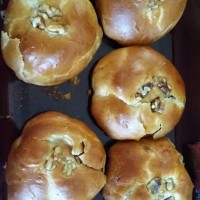 945*****scoreI'm going to add and subtract...2016-11-13 03:55
945*****scoreI'm going to add and subtract...2016-11-13 03:55
-
- Bulgogi Recommended recipe
-
-
1
 Chef Baek's bean sprout bulgogi4.82(104)
Chef Baek's bean sprout bulgogi4.82(104) -
2
 Red pepper paste, pork, bulgogi, golden recipe. The secret of th4.95(41)
Red pepper paste, pork, bulgogi, golden recipe. The secret of th4.95(41) -
3
 "Bean fire without failure!" Dinner menu recommendation. Making4.88(34)
"Bean fire without failure!" Dinner menu recommendation. Making4.88(34) -
4
 Magical taste! Spicy bean sprout bulgogi! If you stir-fry rice,4.85(27)
Magical taste! Spicy bean sprout bulgogi! If you stir-fry rice,4.85(27)
-
- Kimchi Recommended recipe
-
-
1
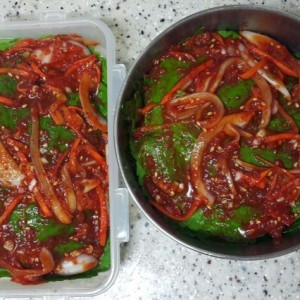 Super simple summer side dish perilla leaf kimchi golden recipe4.93(41)
Super simple summer side dish perilla leaf kimchi golden recipe4.93(41) -
2
 Golden recipe for green onion kimchi. How to make green onion ki4.94(762)
Golden recipe for green onion kimchi. How to make green onion ki4.94(762) -
3
 Fried Kimchi Golden Recipe Kimchi Stir-Fried Kimchi4.89(420)
Fried Kimchi Golden Recipe Kimchi Stir-Fried Kimchi4.89(420) -
4
 [How to make water kimchi] Simple way to make water kimchi4.90(99)
[How to make water kimchi] Simple way to make water kimchi4.90(99)
-